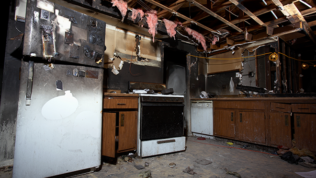Cooking is a major cause of fires in homes.
Fire safety organizations traditionally conduct fire prevention awareness campaigns in October, coinciding with the anniversary of the Great Chicago Fire of 1871. Though its origin is disputed, the deadly fire burned from October 8 to 10 that year, killing about 300 people, destroying more than 3 square miles of the city and leaving 100,000 people homeless.
Home construction and firefighting methods have come a long way in the 150 years since then, but fall is still a good time to think about preventing fire and staying safe at home. Take a few minutes to review tips our loss control and risk management specialists shared in prior blog posts.
SMOKE/CARBON MONOXIDE ALARMS
A correctly placed, working smoke alarm is your first defense against fire. Survey your home to make sure alarms are in the correct places, and use the test button to make sure they work. Change the batteries regularly; it’s easier to remember this step if you tie it to the “spring forward” and “fall back” clock changes that accompany daylight saving time.
And while you’re at it, check your carbon monoxide detector. This odorless, invisible gas is a byproduct of fire and can cause serious injury or death.
EVACUATION PLAN
You may have only minutes to respond if there’s a fire at home. Prepare your family by talking through an escape plan – look at multiple exits from every floor and designate a meeting spot in case you become separated.
FIRE EXTINGUISHERS
It’s unsafe to try to stay and fight a fire – call 911 and summon the pros to do that – but there may be a few dire situations where proper use of a fire extinguisher could buy you the time you need to escape. If you live in an apartment building, fire extinguishers are probably required by code. There are different classes of fire extinguishers meant for different types of fires, so make sure you have the correct one for your environment, place it where it can be used and obtain necessary training to use it properly.
SPECIAL CARE
Cooking is the No. 1 cause of residential fires, according to the U.S. Fire Administration’s latest study, Fire in the United States 2008-2017 (PDF, 2.2 MB). Plus, more people have been cooking at home during the recent periods of pandemic isolation, so take extra care in the kitchen. If you do have a fire, use your fire extinguisher if you can do so safely.
Whether started by Mrs. O’Leary’s cow or some other cause, we can all take a few minutes to think about fire prevention, and how to stay safe.
This loss control information is advisory only. The author assumes no responsibility for management or control of loss control activities. Not all exposures are identified in this article. Contact Landmark Risk Management & Insurance for coverage advice and policy service.

